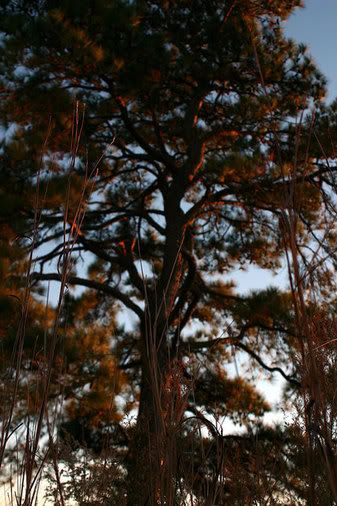
Shore Snows
We arrived home on Thanksgiving, just after midnight. Outside, the racket surprised me and, at first, I wasn't sure what I was hearing. City living has retarded my ear but, like a foreign language left unspoken for a time, the sounds of rural life are not forgotten and can be quickly relearned.
"Isn't that wonderful to hear?," my father asked as he quietly shut the door of the pickup truck. "There must be over a thousand out there."
I stared into the darkness beyond the reach of the garages light, at last recognizing the sound's source. A hundred yards away, in the estuary alongside Heron Hope, geese were conversing excitedly. These were not Canada geese (Branta canadensis), the species with which I am most familiar, but snow geese (Chen caerulescens). The species' voices are distinct. As I stood in the fall chill, listening to the birds, I smiled involuntarily. It's good to appreciate your mother tongue anew.
The next morning, my father called down to me a little after sunrise. "Look outside, Christopher! Quickly."
Bleary eyed, I rolled off the couch and stumbled onto the porch. Thousands of snow geese traded about over the estuary. Their white bodies reflected the brilliant morning sun so that the sky seemed full of diamonds.
"I'd say there are around three thousand of them," my father yelled from upstairs. "What a flight!"
The birds' chatted, gossiped, and argued as they rose in great swirls, preparing to move to their inland feeding grounds. They would return at sundown, to once again take refuge in the estuary. I watched the spectacle in silence, duly thankful to be home.
Heron Hill
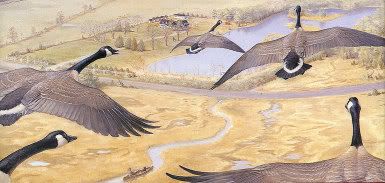
"Heron Hill Farm, through a Canada goose's eye"
c. 1983
Acrylic on canvas
My parents purchased land on the Eastern Shore of Virginia in 1970, seven years before my delivery in a Washington, D.C., hospital. They paid $25,000 for sixty-seven acres and a farmhouse that dated to around 1770. ($25,000 in 1970 is the equivalent of $125,000 today. Unfortunately, my parents hit a rough spot shortly after making the purchase. For a time, they adapted to food stamps and the lean life.
Because the house was situated on a rise of land - 10 feet above sea level - in an otherwise low-lying region, my father named the farm Heron Hill. Over the next thirty years he would buy adjoining property as it became available, eventually creating a 280 acre contiguous farm, the bulk of which was managed for wildlife and put into conservation easement.
I grew up on Heron Hill. In fact, looking at the Ned Smith painting featured on the dust jacket of The Heron Hill Chronicle, a book my father wrote about his experiences on the farm, viewers might notice my mother and me picking pecans in the front yard (see below). (My father is also depicted, returning from a morning hunt in the marsh.)
As I grew older, I helped my father plant many thousands of trees, build islands, dig ponds, plant crops, and generally shape the ecology of the farm to maximize biodiversity. Given my father's intimate connection to the land, I was surprised when my parents sold the property four years ago. They didn't move far, however, and Heron Hope, a compact, five acre property overlooking a beautiful salt marsh and estuary, is less than a mile from Heron Hill.
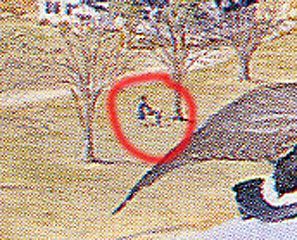
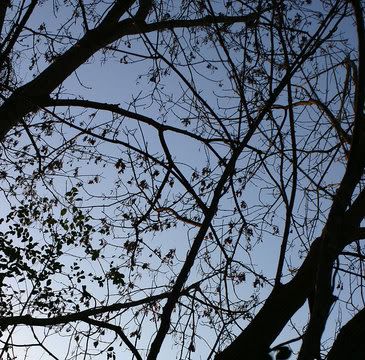
Hot Tubs and Parking Lots
After a filling Thanksgiving meal, some friends and I made our way to a vacant house that one of my friends was house sitting. We climbed into an outdoor hot tub on the back deck. The air temperature was in the upper 30s, but the bubbling water was over 100 degrees Fahrenheit; the contrast felt great.
Cool steam dampened my face as I stared up at the heavens, admiring constellations and the occasional passing satellite or airplane. I have long used Orion as a locater, because the three stars of his "belt" are so easy to identify. Contemplating the celestial hunter, my thoughts turned to early humans' perception of the night sky. How very natural the early creation myths are! How could one not believe in God (or gods) in 3000 BCE? How very sensible the cosmology of Plato and Aristotle two thousand years later? How attractive Intelligent Design (as a notion, not a reality) today? One sometimes forgets about these questions living in the city. Flora and fauna aside, one of the most noticeable differences between New York City and the Eastern Shore of Virginia is the night sky.
I returned to Earth and joined the hot tub conversation already in progress. A Japanese girl, three weeks into her first ever visit to the United States, asked why so many Americans lived in such big houses. No one had a good answer, but I did point out that I planned to live in a small house when I finally leave New York.
The next day, the girl excitedly photographed some of the guns in my house. Rather sheepishly, I agreed to pose with one of my shotguns; I imagine this picture will prompt laughter back in Japan. What else is to be made of the scary American with the boom stick?
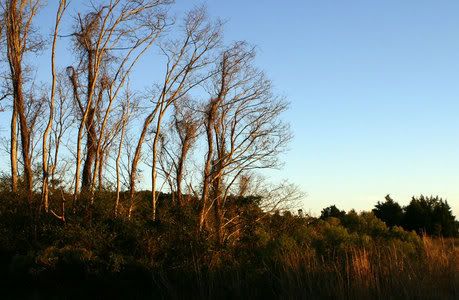
Semipalmated Sandpipers
On Saturday morning at low tide, my father and I carried four ducks to the dock for plucking and gutting. As we pulled the feathers from the still warm bodies, a large flock of semipalmated sandpipers (Calidris pusilla) pitched onto an exposed mud flat nearby. Preoccupied with their feeding, they seemed oblivious to our activities. They skittered about, their legs a blur, and stabbed at the mud with their long bills, presumably grabbing invertebrates and other edible material from the flat. In warmer weather, mummichogs (Fundulus heteroclitus) would have nibbled at the duck intestines we dropped into the now narrow stream near the dock, but the cool weather had made these fat little fish inactive. Instead, raccoons and foxes will recycle these guts come sundown.
We carefully removed the duck hearts and placed them on a tray to be cooked that night. As we cleaned up the plucking area and prepared to head indoors, the tide changed and the stream began to expand. The sandpipers rose in unison and moved north a hundred yards to higher ground.
The Big Flight
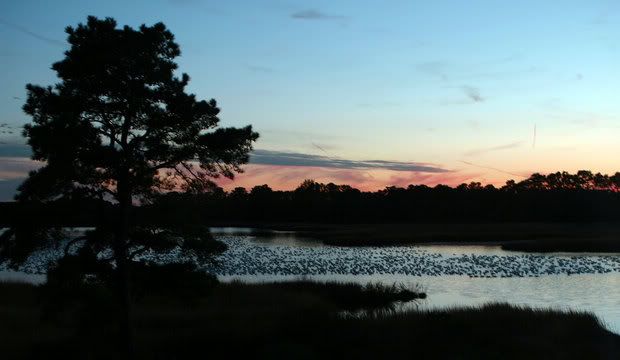
By Saturday afternoon, I was exhausted. My excessive Thanksgiving eating had taken its toll; I was lazy and groggy. My father headed to the deer stand while I walked around our property, photographing anything that caught my eye. Afterwards, I headed inside and lay down on the porch couch. I belched and felt a little better about life. I'm come to prefer hunger to satiation, and I reminded myself that I should swear off excess, even on holidays.
As I lay there, feeling awful, the sky turned purple and pink. The sun fell behind distant pine stands. Then I heard them. The sound was initially faint, but the volume grew steadily until they were over the house and then everywhere at once. How many thousands, I can not say.
My father, a few miles away in a makeshift tree stand, watched the same flight. He estimated that there were around ten thousand. For the next hour, I lay on the couch and watched the birds pour in, filling the estuary beyond capacity. Packed shoulder to shoulder, the geese hid the water from view. The landscape resembled more a stretch of dirty cotton balls than a small wetland bay.
There were Canadas among the snows, but not many. Apparently, 2005 was a good year for snow goose breeding in the Arctic. Maybe increasing temperatures are adversely affecting their predators? Whatever the cause, the flight was a magical sight. These days we rarely witness such abundance in wildlife populations and, like the vast curtain of stars overhead, a deafening flight of geese can properly humble a human.
Note: The picture above is of a much smaller group of birds in the Heron Hope estuary. In the photograph, there are only about one thousand geese.
Photo credit: all photos, Hungry Hyaena, 2005

3 comments:
The spectacles I can hardly experience, ever and ever after.
Really nice account of an area we NYers don't know much about. Good reporting, good observation, good writing -- I enjoyed it. I've only been to the eastern shore twice, but this makes me want to visit again.
Minji:
Always good to hear from you. Let's get in touch soon. I need to get all caught up.
Tom:
Thank you. BTW, I'm working on a short post that involves Sphere. It should be up later today.
Post a Comment